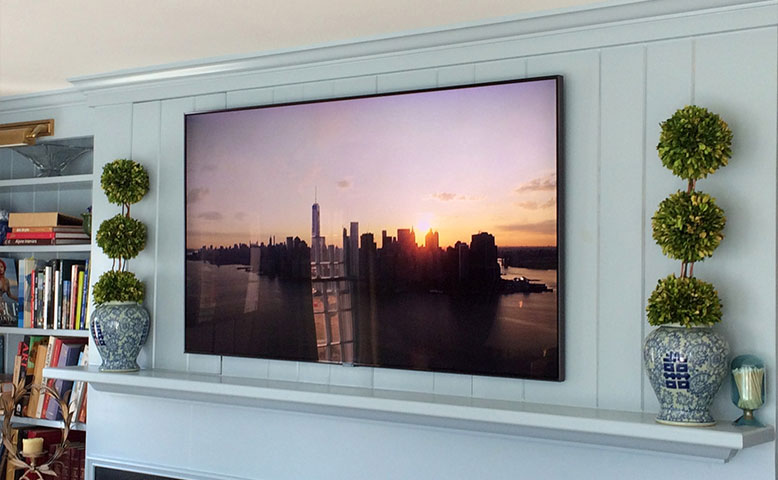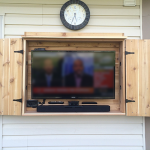
What Are the Most Common TV Mounting Mistakes—and How Do You Avoid Them?
Too many people treat TV mounting like a simple task that can be knocked out in 30 minutes. Grab the tools, find a wall, screw in the mount, and call it done. This way of doing things usually ends in sorrow. If you don’t plan for the TV size, the wall structure, and the viewing height, the result almost never lives up to your hopes. Starting with a clear plan makes sure that the TV is put where it belongs, where it is safe, where it is easy to watch, and where it makes the room feel right. Planning also helps you avoid making holes you don’t need to and running to the tool store at the last minute.
Picking the Wrong Wall
Every wall isn’t made to do its job. Some people can’t handle the weight. Some people face the wrong way, which makes the computer glare all day. The wall bolts are another problem. If they’re not in the right place, everything moves around.
Picking the right wall requires more than just ease. When you make a smart choice, you avoid damage, save time, and enjoy the show more. It also means less trouble when you want to change the setup or rearrange the room in the future.
Mounting at the Wrong Height
Mounting too high or too low can quickly turn movie night into a pain in the neck—literally. The most common mistake is placing the screen too high because it “looks better” or fits some visual idea.
But height should serve comfort, not style. A properly mounted TV lines up with your eye level when seated. That’s what reduces strain and keeps you locked into what you’re watching, instead of shifting around to find a better angle.
Ignoring the Studs (Or Guessing Their Location)
Drywall alone won’t hold a TV. Anchoring directly into the wall without finding a stud almost always ends badly. Some try to guess where studs are and get lucky, but most end up with a crooked mount, weak hold, or worse—damage that’s expensive to fix.
Using a stud finder is a simple step that pays off every time. It’s not about getting fancy—it’s about doing the job right. Mounting into solid support gives the setup lasting strength and avoids unexpected repairs.
Forgetting About Cables
The picture might look clean at first, but dangling cords and messy wiring pull focus fast. Skipping cable planning is one of the biggest regrets after a mount is finished. It takes just a few extra minutes to route things properly and avoid the mess.
Here’s what helps:
- Choose a wall plate for routing HDMI and power cables inside the wall.
- Use cable raceways for external hiding if cutting into the wall isn’t an option.
Keeping it tidy not only improves the look but also prevents cables from pulling out or wearing down over time.
Using the Wrong Mount for the TV
TVs aren’t one-size-fits-all when it comes to mounting hardware. Brackets vary based on screen size, weight, and VESA compatibility. Guessing or reusing old mounts can lead to instability or damage to the screen.
When the mount fits the TV properly:
- Weight is supported evenly.
- Motion features like tilting or swiveling work correctly.
- The installation stays safe and secure long-term.
Taking time to match mount specs with TV requirements makes everything smoother, safer, and easier.
Overcomplicating the Install
You don’t have to have everything made specifically for you. Before they even set up the TV, some folks go too far and install shelves, lights, or even entertainment walls. Even though it can seem like a wonderful idea, all that extra labor causes mistakes, delays, and increases the likelihood of complications.
A fresh install can always be updated. Making an effort to get the mount perfect first will reduce your mistakes and provide you with a solid foundation upon which to develop.
Skipping the Level
Eyeballing a mount almost always goes sideways—literally. A TV that’s just a few degrees off makes the whole setup feel off-balance, even if everything else is done right. It draws attention and distracts from whatever’s on screen.
Using a level ensures a clean look. Digital levels or even apps on smartphones make it easy. This tiny step makes a huge difference in how polished the final result feels.
Going It Alone
It’s rare for one person to mount a TV. Dropped TVs, bent brackets, or misaligned mounts are the results of attempting to balance the screen, the tools, and the hardware alone. One more pair of hands makes all the difference, even in situations that appear controllable.
Here’s what a helper can assist with:
- Holding the TV in position.
- Checking alignment while you fasten the screws.
- Managing cables during installation.
- Passing tools or hardware as needed.
A second person cuts down on time, reduces frustration, and helps avoid accidental damage. It’s a smart move every time.
Final Thoughts
It doesn’t have to be hard to place a TV. But you do need to be careful. Most mistakes are made because people are in a hurry, make assumptions, or skip over the details that are necessary for everything to work. With Becker Media Design’s help, a good plan, the right tools, and a focus on doing each step carefully can make the difference between a setup that works well and looks great and one that gives you trouble right away. Setting up a TV the right way makes a room feel better and adds warmth. It also makes movie nights, game days, and binge sessions more enjoyable.







